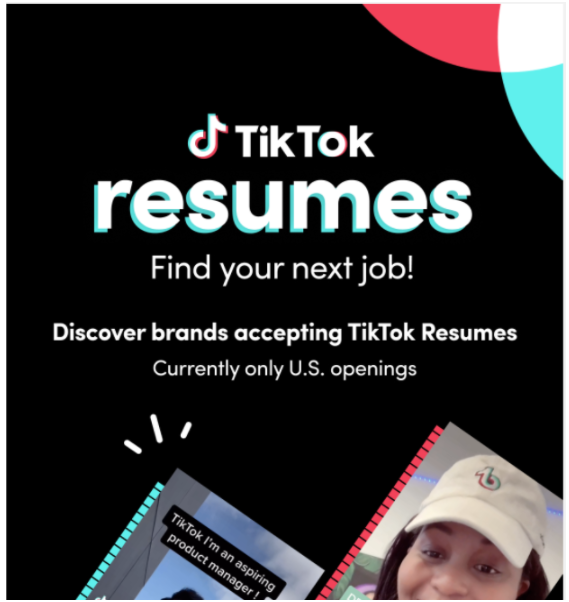
For some time, I’ve been looking for one “source” that curates modern takes on HR Tech, perspectives from the people who build it, and its impact on enterprise — something that’s tailor-made by professionals for decision-makers.
I never found it — so I decided to build it.
Every week, I’ll be sharing fresh insights on tech platforms, design, data, and the future of work — straight to your inbox.
My Thoughts
The energy in the SEI Atlanta office has been absolutely electric these past few weeks. If you haven’t heard, the Braves have made it to the World Series for the first time since 1999. And our Atlanta consultants are looking forward to cheering on their home team together.
Therefore, this seems like an opportune time to talk about the benefits of establishing a relationship between your organization, its employees, and the community. The most popular means of community engagement is paid volunteerism, or corporate philanthropy. CSR initiatives offer two vital benefits to an organization. The first is an overall improvement in employee engagement. One study by market research firm Deloitte found that 74% of respondents agreed that paid volunteerism provided an improved sense of purpose. 70% believed that volunteer activities were more likely to raise employee morale than a company happy hour. 😬🍸 If we’ve learned anything in the past year, it’s that purpose and morale can make or break retention rates.
The second benefit is a competitive hiring edge. Workforce studies have indicated that a company’s values will influence where Millennials and Gen Z choose to work. Strong CSR initiatives demonstrate to candidates that your organization cares about social and environmental issues.
Not every day of your corporate philanthropy programs will be as exciting as seeing the World Series. But many organizations are vastly underutilizing these sorts of programs, to the detriment of themselves, their employees, and the communities.
Market Moves
Kickstarter, the layman’s VC firm, has introduced a new category for startups: Magic and Divination. 🪄 🎩 🐇 Sounds a little unusual, right? According to the site, magic-related projects have a 30% higher rate of full-funding than all other projects on the site. In doing my own research to ensure this market trend wasn’t just smoke and mirrors, I found some very surprising numbers. According to the New York Times, consumer spending on psychic 🔮 and astrology 💫 apps rose 66% between 2018 and 2019, leaping from $24 million to $18 million. Even market research company IBIS World has studied the trend. In a recent report, the psychic services industry is forecasted to have a 2.6% growth rate in 2021, making it a $2 billion market. There was one question I couldn’t find an answer to, though: Does this trend imply that we’re gaining faith, or losing it?
Tech Innovation at Work
Having a hard time finding employees? Instead of checking your hiring portal, you should consider joining TikTok. Yes, that TikTok, home of adorable pets and trendy dances. But the platform has evolved. It is now a ubiquitous, social gathering space where users (60% of whom are under the age of 30) can find almost anything with just a hashtag — and that now includes employees. 👩💼👩🎓👨💼
Over the summer, TikTok launched its own radical way to connect employees and employers: TikTok Resumes. Using the hashtag #TikTokResumes, users can create videos 🤳 introducing themselves, showcasing their work, and explaining why they are the right fit for a company or position. Think of these video applications as a cover letter you actually want to read — one that paints a clear picture of an applicant’s personality and soft skills. TikTok Resumes isn’t just one-way, though. Employers can actively advertise and recruit open positions. Chipotle 🌯 was one of a handful of companies participating in the initial pilot program. Their efforts, which included some pretty great videos, resulted in a 7% increase in applicants. Ready to give it a shot? Here are some tips for building a TikTok recruiting strategy.

New research from Gartner predicts that worldwide IT 💻 spending will total $4.5 trillion next year, a 5.5% increase from 2021. It’s a pretty penny, but the numbers actually indicate that spend is slowing down. Gartner VP John-David Lovelock cited a transition away from application purchasing software as a possible contributor to the trend. “Enterprises will increasingly build new technologies and software, rather than buy and implement them…focusing spending on making their infrastructure bulletproof and accommodating increasingly complex hybrid work for employees going into 2022.” 💬 What does this mean for the HR industry? Ideally, it will allow human resource processes to become more fit to an organization’s unique needs and provide a better experience for employees. Read Gartner’s full press release here.
A new startup is turning loyal brand customers into customer support specialists👩💼 and improving the gig worker experience through AI. 🤖 Limitless’ platform offers partnered companies (like Unilever and eBay) a scalable knowledge-management platform to onboard and train enthusiastic consumers as gig workers, aka GigCX Experts, to provide enhanced digital customer support experiences. Of all the remote customer support services both workers and companies have to choose from, though, Limitless has one major advantage: their AI bots. 🤖 Using extensive artificial intelligence, the Limitless platform can identify and respond to behavior trends, worker availability gaps, and more. The combination of enhanced artificial intelligence and real customer support specialists has resulted in major improvements for partnered brands, who report seeing a 20% higher Customer Satisfaction Score and at least a 100% faster response rate. The company is also an advocate for fair work conditions for gig workers, building its business model the GoodGig Charter.
The Changing Workplace
We all know about workplace harassment and workplace hostility, but have you heard of workplace incivility? 🤔 For those who haven’t, psychologists define it as a behavior with “ambiguous intent to harm the target, in violation of workplace norms for mutual respect.” In other words, it’s not responding to meeting invites, snubbing coworkers in the hall, snide comments in meetings, etc. 😤 It’s something managers don’t necessarily prioritize when assessing HR resources, but new research is showing that workplace incivility has been on the rise 📈 😬 over the course of the pandemic — and even more so since we’ve begun returning to the office. Above all, the most threatening thing about incivility is its “tit for tat” cycle. If someone is rude to you, it feels more acceptable to be rude to someone else, and so on —until every member of your team is affected. ☠️ According to the experts, the only way to completely stop this behavior is to implement a zero-tolerance policy for rudeness in the workplace — something that many leaders are hesitant to do because of the perceived minimal impact. Read more strategies for lessening the damage of workplace incivility can have on culture and employees in this article from HR Executive.
As remote work practices continue to grow, more companies are coming up against a question they’ve never had to answer: what are our geographic pay policies? 🗺️ 💲🤔 Until now, companies have almost always kept their workers in close proximity. Now, though, work is no longer a place. And with a workforce spread out across the county, the question of adjusting pay to reflect an employees’ cost of living is a hot debate. 🧯🔥 So far, we’re seeing a few major trends emerge: Employees are almost entirely in agreement that employers should not be adjusting salaries — it is, after, just a fancy way of saying “pay cut.” When an employees’ pay is adjusted down, it is significantly less in relation to the change in an employee’s cost of living. There also is the issue of the new Digital Nomad — a worker who’s almost constantly traveling while working. Some stay domestic, living in renovated vans 🚎 while others travel around the world, working from their laptops in French cafes one day and from a Greek island the next. Their cost of living changes almost constantly, making identifying a “fair” geographic pay policy even more difficult to identify.
Personally, I don’t think it is a debate at all — employees should be paid the same amount for the same work, no matter where that work is done. How an employee chooses to use their salary, be it on housing or food or a new Airbnb every month, is not the business of the employer.

All About Data
Here are some of the key takeaways a recent McKinsey study ‘Great Attrition’ or ‘Great Attraction’? The choice is yours. The study focuses on forecasts on the Great Resignation, and how employers are affecting their workers’ decisions to leave:
- More than 15 million workers have quit their jobs since April 2021.
- 40% of respondents said they were at least somewhat likely to leave their current job.
- People are leaving jobs in nearly every industry, including education, manufacturing, healthcare and social assistance, leisure and hospitality, transportation and utilities, and white collar fields.
- 64% of employers expect voluntary turnover to continue or become worse in the next six months.
- 64% of employees who were at least “somewhat likely” to leave their job would do so even without a job offer in hand.
- 65% of employees with no interest in quitting their current job said their primary reason for staying was because they liked where they lived (not that they liked their job).
Click here to subscribe to Exit Interview, a weekly email about tech platforms, design, data, and the future of work — straight to your inbox.

